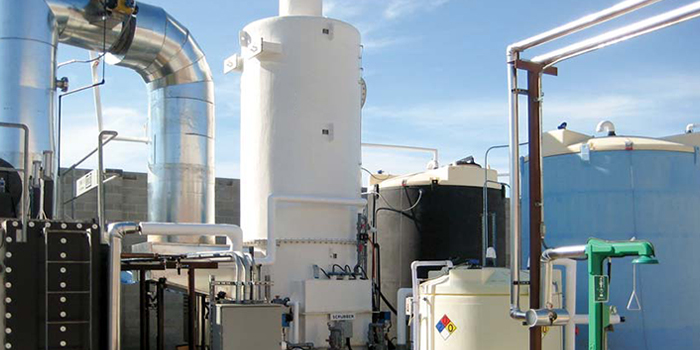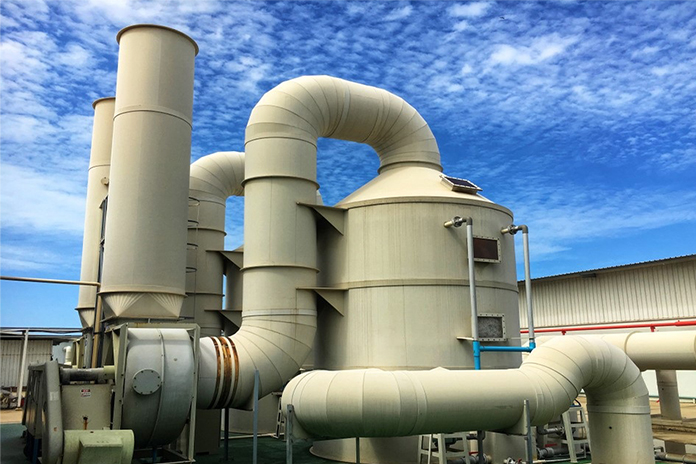Air quality control systems eliminate hazardous particles from both outdoor and indoor air. A wide range of manufacturing industries, including power plants, automotive, mining, medical, and pharmaceutical, emit pollutants into the environment. As an outcome of this, air quality control systems (AQCS) offer solutions for managing and handling air, gases, and pollutants, resulting in cleaner air discharge. To keep the air clean, air quality management systems employ air filters, scrubbers, electrostatic precipitators, and other devices. These reasons are moving the air quality control system market ahead. In addition, the rising need for air filtering systems in the medical and pharmaceutical industries is increasing demand for worldwide air quality control systems. Furthermore, as industry and urbanization expand, the global decline in air quality has become a major concern. As a result, countries such as China, India, and others are working to eliminate air pollution. As a result, the overall market for air quality control systems is expanding. On the contrary, the market is projected to be limited by the high initial and recurring expenses of the systems. Furthermore, the power generation industry is shifting away from coal-fired power plants, which are the primary users of carbon dioxide. air filtering systems. Reduce the spread of fly ash. As a result, the decreased number of coal power plants is impeding the growth of the air quality control systems market over the forecast period.
Benefits of Air Quality Control Systems
- Enhance air quality: monitoring aids in identifying locations with poor air quality and the pollutants to blame. This data can be utilized to improve air quality by implementing air pollution control measures. Reducing pollution levels in the air can lead to better health outcomes and a higher quality of life for people.
- Monitor regulatory compliance: air quality sensors and other equipment allow you to keep a watch on emissions from industrial sources, such as power plants and industries, to verify they satisfy government guidelines and alter your outdoor activities accordingly. One of the primary advantages of air quality monitoring is that it allows us to ensure that the air we breathe is safe to breathe.
- Climate change should be monitored: Because changes in weather patterns, such as an increase in the frequency of heat waves and wildfires, can impact the quantities of pollutants in the air. Air quality monitoring can help determine the influence of climate change on air quality and take measures to reduce it by monitoring these changes.
Objective:
- Identifying contaminated locations and comprehending spacetime shifts
- Adherence to atmospheric air protection legislation
- Obtaining the information required to establish Action Plans in accordance with European directives or other international legislation when alarm levels are exceeded
- Informing citizens on the current state of local air quality
Future Scope:
The project can be improved in more than one way in the future.
- Connect a greater number of sensors to determine the detailed composition of all gases present in the air.
- Create a webpage and upload data with the date and time.
- To store data, connect an SD card.
- Connect a GPS module to monitor pollution at a specific location and post it to a webpage for netizens to view.

Regional Analyses:
France, Germany, the United Kingdom (UK), Italy, and the rest of Europe dominate the European air quality control system market. During the study period, Germany is expected to have a large share of the European air quality control system market.
With significant disposable wealth and widespread awareness, air purifiers are becoming increasingly popular in Germany. An air cleaner, also known as an air purifier, is a device that eliminates pollutants from the air in a room. This is beneficial for improving indoor air quality. In Germany, around 570,000 air purifiers will be sold by 2020. In 2021, this figure is expected to rise to around 740,000. In the near future, the residential sector in Europe will considerably contribute to the growth of the air quality control system market.
France, Germany, the United Kingdom (UK), Italy, and the rest of Europe dominate the European air quality control system market. During the study period, Germany is expected to have a large share of the European air quality control system market.
With significant disposable wealth and widespread awareness, air purifiers are becoming increasingly popular in Germany. An air cleaner, also known as an air purifier, is a device that eliminates pollutants from the air in a room. This is beneficial for improving indoor air quality. In Germany, around 570,000 air purifiers will be sold by 2020. In 2021, this figure is expected to rise to around 740,000. In the near future, the residential sector in Europe will considerably contribute to the growth of the air quality control system market.
Recent Development
Siemens AG: In March 2023, Siemens AG introduced Connect Box, an open and simple-to-use IoT solution for managing small to medium-sized buildings.
Thermo Fisher Scientific: In January 2023, The acquisition of the Binding Site Group by Thermo Fisher Scientific will aid in the expansion of the company’s existing specialty diagnostics business.
Conclusion:
Continuous monitoring of air quality allows for rapid reactions to changing conditions and developing pollution sources. This adaptability boosts the efficacy of air quality management strategies. Future Sustainability Air quality control systems will be critical in ensuring that cities remain habitable and sustainable as global urbanization progresses. A resilient future requires sustainable urban planning combined with good air quality management. Opportunities and Difficulties Despite their advantages, air quality management systems may encounter obstacles such as rising maintenance costs, shifting pollution sources, and the need for international collaboration to combat transboundary pollution. These difficulties give chances for creativity and teamwork.
